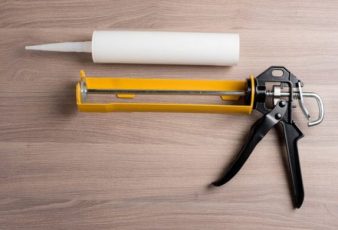Art is not just a form of expression; it is an investment. Customized art pieces hold immense value, both aesthetically and financially. As a proud owner of such treasures, it is essential to understand the importance of art maintenance and the steps required to keep your art in pristine condition.
In this guide, we will explore the significance of art maintenance, identify different art mediums, provide general guidelines for art maintenance, discuss specialized care for each medium, and provide tips for protecting your art from environmental damage.
Understanding The Importance Of Art Maintenance
Customized art pieces are unique creations that reflect your taste and personality. Not only do they add beauty to your living spaces, but they also hold sentimental value. Regular care and maintenance are crucial to ensure their longevity and preserve their beauty for generations.
When you invest in a customized art piece, you invest in something more than just a decorative item. These pieces hold intrinsic value due to their uniqueness and personalization. Each piece tells a story and carries emotional significance. It may be a painting that reminds you of a special moment or a sculpture that represents a loved one. By maintaining your art, you preserve its physical form and safeguard the memories and emotions attached to it.
Regular care and maintenance of your customized art pieces involve more than just cleaning. It also includes periodic inspections to identify any signs of damage or deterioration. Catching potential issues early allows for prompt repairs, preventing further damage and preserving the integrity of the artwork.
Identifying The Materials Of Your Art Pieces
Before diving into the specifics of art maintenance, it is crucial to understand the materials used in your customized art. Differentiating between various art mediums and recognizing the materials will help you tailor your maintenance routine accordingly.
Differentiating Between Various Art Mediums
Customized art pieces can be created using various mediums, such as oil paintings, watercolors, sculptures, and installations. Each medium requires unique care to preserve its integrity. By understanding the differences between these mediums, you can provide the best possible care to your art.
Recognizing The Materials Used In Your Custom Art
Your customized art may incorporate various materials, from canvas and paint to metal and glass. Take the time to familiarize yourself with the materials utilized in your art. This knowledge will help you make informed decisions regarding cleaning, handling, and protecting your pieces.
General Guidelines For Art Maintenance
While each art piece may have specific maintenance requirements, some general guidelines apply to all customized art. By following these guidelines, you can ensure that your art remains in optimal condition.
Cleaning Your Art Pieces
Regular cleaning is essential to remove dust and dirt from your art. Use a soft, dry cloth or a brush designed for art cleaning. Avoid using harsh chemicals or abrasive materials that may damage the surface. Remember to dust your pieces’ front and back, as dust can also accumulate on the rear.
Handling And Moving Your Art Safely
When handling and moving your art, exercise caution to prevent accidental damage. Use clean hands or cotton gloves to avoid smudging or transferring oils onto the artwork. Lift the art from the bottom or sides, supporting it adequately to prevent any stress on fragile areas. Use proper packaging materials and secure the art during transportation to avoid shifting or impact damage.
Specialized Care For Different Art Mediums
Now that you understand the general guidelines, let’s delve into the specialized care required for each art medium. By catering to the unique needs of different mediums, you can ensure that your customized art retains its original beauty.
Caring For Oil Paintings
Preserving the vibrancy and beauty of your oil paintings, especially precious ones like a family portrait painting, requires particular attention and care. Dust, dirt, and moisture can be detrimental to the longevity of your artwork. Regularly dust your painting with a soft, dry brush or cloth, ensuring you do not use any cleaning agents unless specifically designed for oil paintings.
For paintings that capture personal moments or milestones, consider getting them done by reputable artists or companies specializing in customized artwork. One such platform is Memorialize Art, which crafts personalized artwork tailored to your preferences, ensuring your cherished memories are immortalized in the highest quality.
Maintaining Watercolor Art
Watercolor art is known for its delicate, translucent appearance. Avoid exposing watercolor paintings to excessive humidity or direct sunlight, as it can cause the paint to degrade. To clean watercolor art, lightly brush the surface with a soft, dry brush to remove any loose particles.
Preserving Sculptures And Installations
Sculptures and installations require careful handling and maintenance. Use appropriate cleaning materials based on the material used in the sculpture. Regularly inspect your sculptures for any signs of damage or degradation. If repairs are needed, consult a professional conservator experienced in working with the specific material of your sculpture.
Protecting Your Art From Environmental Damage
In addition to regular maintenance, protecting your art from environmental damage is crucial for its longevity. You can shield your customized art from harmful elements by taking proactive measures.
Preventing Sunlight Damage
Sunlight can cause significant damage to art over time. Avoid displaying your art in direct sunlight or intense artificial light to prevent fading and discoloration. If you want to showcase your art near windows, use UV-filtering glass or apply window film to protect against harmful UV rays.
Avoiding Humidity And Temperature Fluctuations
The ideal environment for artwork is one with stable humidity and temperature levels. Excessive moisture can cause mold growth, while extreme temperature fluctuations can lead to cracking or warping. Keep your art in a climate-controlled space, away from direct heat sources or areas prone to humidity, such as bathrooms or basements.
Final Words
By adhering to these pivotal guidelines for art maintenance, you stand not just to conserve but to actively enhance the joy and inspiration radiated by your customized art pieces for generations to come. Regular care paired with disciplined maintenance routines and shielding from environmental harm can be more than just a preservation effort; it becomes a reiteration of the care and love that birthed those precious memories encapsulated in each piece.
Visit Memorialize Art, a beacon in personalized artwork creation, to immortalize your most cherished moments. With their expertise, you are not just protecting a physical artifact but creating a timeless repository of the deep-seated emotions and vivid memories that each artwork embodies, allowing for a legacy of joy and inspiration that stands the test of time.
Read Also:




























